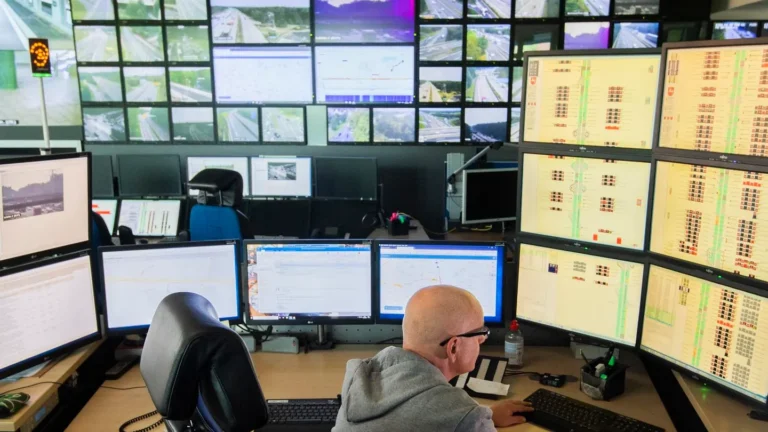Dean DeBiase is a best-selling author and Forbes Contributor reporting on how global leaders and CEOs are rebooting everything from growth, innovation, and technology to talent, culture, competitiveness, and governance across industries and societies.

CES 2025: How To Meet AI’s Inexhaustible Demands For Power

By Dean DeBiase
January 7th, 2025
On the heels of Nvidia CEO Jensen Huang declaring the rise of Agentic AI at CES 2025, President-elect Donald Trump and DAMAC CEO Hussain Sajwani announced a $20 billion investment to build data centers across the United States.
At today’s Mar-a-Lago press conference, Sajwani stated: At the moment, we’re planning [to invest] $20 billion in datacenters catering to the AI and cloud business for the hyperscalers”, adding, “and even more than that, if the opportunity in the market allows us.” Addressing current hurdles, and what I call the need for speed, Trump added: “For anyone investing over a billion dollars, we’re guaranteeing expedited reviews to avoid the regulatory quagmire.”
Back here at CES, Huang debuted his next gen GPUs and predicted agentic will reboot the way we live and work, and likely develop into multi-trillion-dollar opportunities across sectors. In his action-packed keynote he stated, “The age of AI Agentics is here,” and that “AI agents are the new digital workforce,” which will transform our work norms, and “the IT department of every company is going to be the HR department of AI agents in the future.” Let that one sink in.
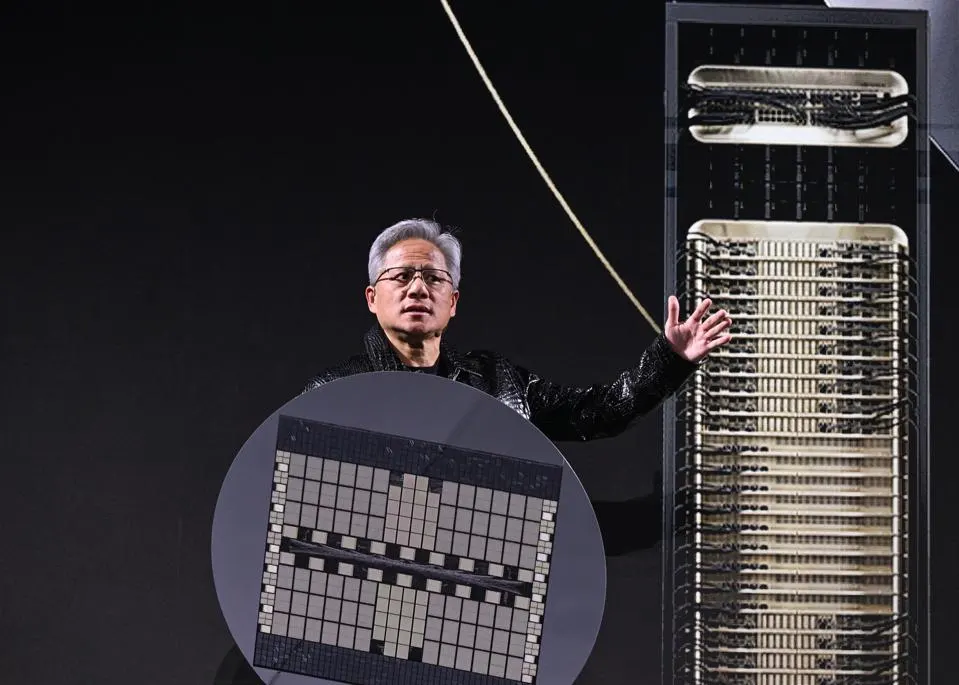
I’ve attended and exhibited at this annual tech show for decades—even having one of the largest booths, when I was an LG CMO. I’ve seen hundreds of product promises come and go and companies die. However, this year CES should be called the AI Show. With Nvidia and other Magnificent Seven banners as far as the eye can see, and an uncountable number of emerging vendors, most all are infusing AI into their future offerings.
We have seen this CES movie before, from the early debut of Palm Pilot and Interactive TV demos to the promises of an ‘Information Superhighway.’ But this time it’s different—because it is already happening.
And when you add up all the tech advances that will ripple through the global economy this decade, from autonomous vehicles and robotics to super computers and data centers, a looming issue continues—power. As in the clear and present lack of it.
I recently unpacked components that will play a role in AI’s revolution, like SLMs, Agentic AI, and quantum. But other bottlenecks in scaling high performance computing (HPC) continue, like how to meet the demand for building efficient AI-driven data centers and supplying their insatiable appetite for energy.
In American policy driving technology and business growth, I explored the massive requirements underpinning modern AI, with Meta investing $10 billion in their Louisiana center alone. To power AI, you need to build data centers in very large numbers that have just the right kind of infrastructure, let’s call it plumbing.
There are many trends driving the need for better infrastructure which aren’t talked about as much as the cool CES announcements. Since they will impact all of us, let’s dive into what’s next and how business, civic and government leaders can come together to meet today’s demands of this juggernaut while preparing for the revolution ahead.
The Burgeoning AI-Driven Demand For Data Centers
The numbers can make your head spin. McKinsey research projects the global demand for data center capacity to rise 22% annually through 2030, requiring 219 GW. That may be a low estimate. Around 70% of the capacity will be for data centers that can handle advanced-AI workloads.
In the first half of 2024 alone, 78 data center projects in the U.S. began construction, totaling over $9 billion and almost 12 million square feet, according to Dodge Construction Network. The electricity used by these data centers could power 6.5 million American homes.
This trend did not happen overnight. Even before AI ignited it, WFH, streaming, cloud computing and digital business drove the need for more of these modern computing warehouses.
But AI is indeed a force multiplier. Jensen Huang also projects that companies, led by Amazon, Microsoft, Google and Meta, will invest $1 trillion in data center AI upgrades in the next four years. There’s that word again, T as in one trillion dollars. Sounds high, but you get the idea. Cushman & Wakefield says this growth is expected to drive $75 billion in data center spending by 2028, accounting for approximately 35% of total market demand.
Scaling To Meet Demand — No Small Task
To meet that demand, McKinsey estimates that at least double the data center capacity built since 2000 needs to come online in less than a quarter of the time—a 5x development timeline will make the second half of this decade a busy time indeed.
Unsurprisingly, real estate and construction industry insiders are becoming concerned (and excited) about their ability to meet that demand. But, while big tech seems to spend whatever it takes to build, baby, build, the problem isn’t just economics.
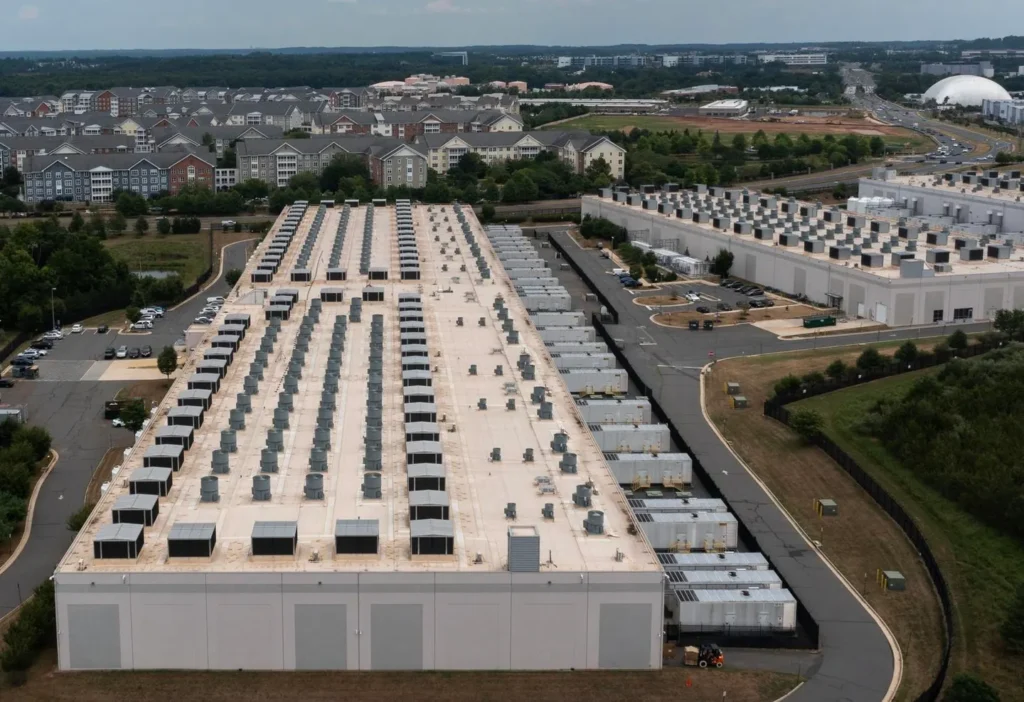
There’s often community opposition, with many concerned about the environmental impact and the strain on the power grid. It’s a race to find the best locations, driving fierce competition for real estate with good fiber access and sufficient power and water. Check out Data Center Alley in Northern Virginia, a prime example, which has 240 data centers in operation and 112 under construction. Virginia’s state’s data centers process 70% of the world’s internet data and probably consume 25% of the state’s energy.
Feeding Power-hungry Beasts
And just how power hungry are AI data centers? Picture Clark Griswold’s Christmas light show (from the Vacation movie franchise)—but multiplied by millions and running full blast, day and night.
Let’s take a peek under the hood. The demand springs from LLM-based AI processing that relies on graphic processing units (GPUs), chips from Nvidia and others that were originally used for gaming. There is the issue of “data center densification” stemming from computing equipment becoming more powerful and taking up less space. This leads to greater cooling requirements in general, as well as the need to bring the cooling closer to the components.
A single hyperscale AI data center contains tens of thousands of GPUs, continuously consuming 150 MW or more, enough to power a small city, with complex, energy-hungry forced-air cooling systems that consume as much as 300,000 gallons of water per day, equal to 1,000 homes. I wasn’t kidding about plumbing issues.
Not Your Old Man’s Construction Projects
Additionally, data centers pose challenges that are distinct from other kinds of large-scale construction projects. More than half of the workers are mechanical, electrical, and plumbing (MEP) contractors who operate on a faster schedule and in more crowded conditions than they do in most other kinds of construction.
Chaos in the supply chain for power and cooling components leads to two labor extremes: overcrowded job sites with trade stacking, increasing injury risks, or costly delays idling large crews, wasting wages and productivity, and extending project timelines—potentially costing millions per day in construction delays.
“With massive data center demands for liquid cooling systems and advanced power infrastructure, specialized mechanical and electrical equipment supply chains become irregular. That coupled with AI data centers’ need for 10 times the skilled MEP labor, and the industry-wide shortages of that labor, is creating a near-perfect storm requiring digital planning tools to predict and manage the interacting variables,” said Dan Fauchier, Senior Lean Consultant, Construction Accelerator LLC.
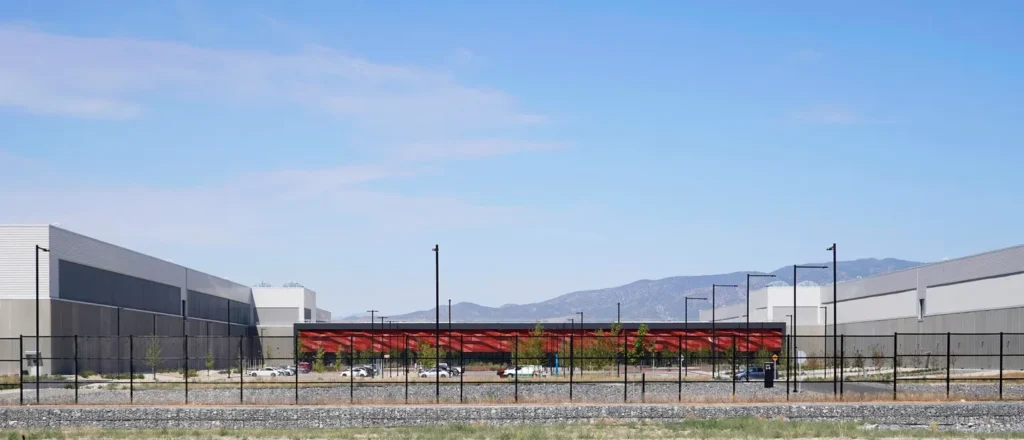
Knocking Down Hurdles (Yup, There’s An App for That)
Burgeoning demand combined with the above challenges impede progress in data center construction. To rise to the occasion, construction teams need tight discipline and precise execution akin to a military operation. However, traditional planning and scheduling methods today still largely rely on spreadsheets and sticky notes. That just won’t cut it anymore.
Success hinges on planning, scheduling and continuously aligning the efforts of all involved: the supply chain, owners, engineers and contractors. With the average build time per site growing, and the total U.S. planned square footage expanding at 350,000 square feet per month, construction planning software has become one of the most important tools.
Even here at CES, there is awareness for speed in these transformative tech times. There are many emerging companies stepping up to these challenges—where the rubber meets the road—to scale-up sustainably faster, like software provider MOCA Systems, Inc. (MSI), and TECfusions, an owner and operator of high-density data centers.
Speaking with MOCA CEO, Sandy Hamby, she said that more than a third of the 50 largest data center owners and more than half of the 25 largest data center contractors use their Touchplan to “transform analog chaos into digital calm.” It basically enables complex scheduling of materials, equipment, and labor staging—think using AI to build AI data centers faster.
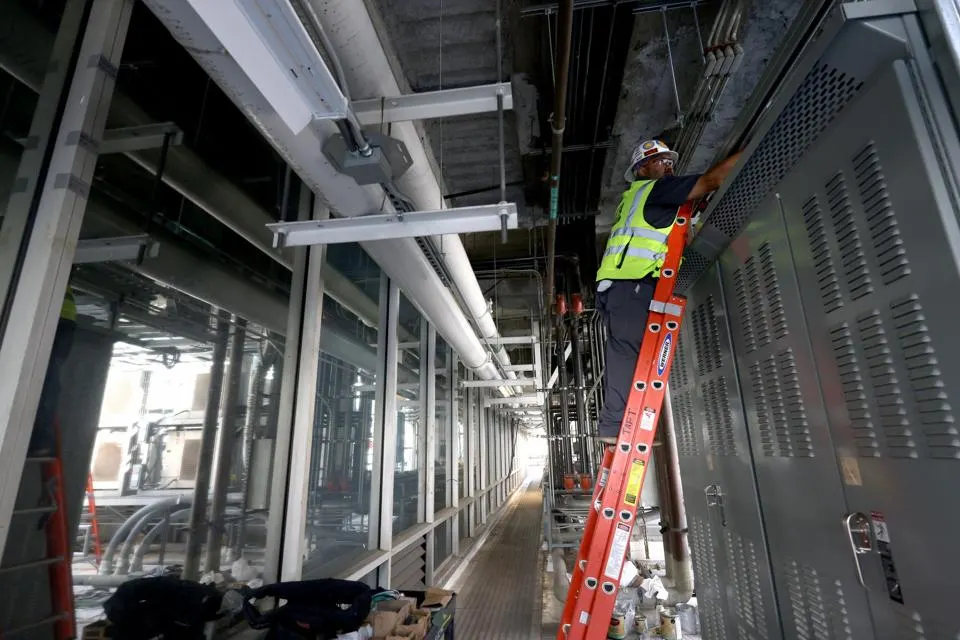
For example, the cooling equipment comprises components weighing tons. When they are scheduled for delivery to the site, there better be cranes and workers present to get unloaded and installed as quickly as possible. The project teams can plan and sequence tasks around material and equipment deliveries to ensure work continues more productively.
A large GC firm, Brasfield & Gorrie, uses the platform as their primary planning tool for one of the largest data center owners, building a new data center megaproject that will cover up to 2,500,000 square feet spanning more than a half-dozen sites and delivering 360 MW of power when complete. That’s a lot. Being built in rapid succession using multiple GCs and several large MEP subcontractors, it’s important for them to have a planning and collaboration platform that enables stakeholders, and provides detailed, real-time data analytics for requirements, constraints, and performance.
B&G Senior Superintendent Chace Larson said, “This was a fast-paced project with a very large team, and getting all the information to all the trade partners was critical. Because you can’t do this kind of project with old-fashioned trade stacking, everybody’s got to have their own space and allocations of time. But it’s also all about managing a very complicated workflow, so everybody has ownership and buy-in for planning and execution.”
Bringing Sustainable AI-Ready Sites Online Faster
TECFusions is stepping up to the realities of AI demand outpacing supply with a different strategy than the industry norm of building new data centers that cost too much, take too long and don’t always have sufficient power available. Their approach is to rapidly repurpose dormant facilities into AI/HPC centers that can be retrofitted at a fraction of the time and cost, while supporting local communities and deploying on-site microgrid power generation—like Nat Gas—alongside utility power.
Some say power is a new killer app, and I guess it actually can kill you. But, with America’s short-sighted policy track record and lack of infrastructure investments, many data centers being built will be waiting for energy. Too harsh? I challenge you to list the number of new U.S. refineries, Nat Gas pipelines, and nuclear or coal facilities built in the last decade…or two. Unfortunately, it’s a short list. Time to change that.
In the meantime, companies looking for more immediate GPU/MW availability are turning to companies like TECfusuions, who’s experiencing no shortage of firms wanting to partner up—recently announcing a 1GW AI infrastructure deal, with AI cloud firm TensorWave.
According to their CRO, Shawn Novak, “Our Clarksville VA data center stands as a benchmark for innovation, hosting one of the world’s largest GPU clusters designed to tackle AI’s most complex workloads. The rapid growth in demand for AI-ready infrastructure underscores the value of our high-density, scalable solutions. This momentum is driving exciting new partnerships like our 1GW AI infrastructure agreement with TensorWave.”
Eco-friendly and community trends seem to be powerful components as well. According to James D. Jennings, Chairman, Mecklenburg County VA Board of Supervisors. “TECfusions adaptive reuse strategy not only brings new life to existing infrastructure but also demonstrates a commitment to sustainable development that aligns with our community’s values.”

Steve Hershey, the company’s Government and Regulatory Affairs VP added, “By transforming abandoned industrial sites into state-of-the-art data centers, we’re meeting the urgent demands for AI and HPC infrastructure and setting a benchmark for sustainable development in our industry.”
Seizing The Power Of The Forth Industrial Revolution
Looking ahead, there are many factors driving the need for more data centers—including the data hungry apps on your phone. Projections show that this trend will continue, but so will the challenges of operating, powering, and cooling these facilities. However, there are developments in the works that could alleviate the situation; some in the near term, others, much further off on the revolution’s timeline.
A new generation of more efficient processor chips designed for AI, and new AI algorithms designed to use those chips will help. Google, Apple, and other tech behemoths are certainly already pursuing this goal, but there is plenty of room for innovative startups to also get there.
Did I mention chips get hot—very hot? Many are excited about the potential for liquid cooling to help—and reduce energy and water consumption. However existing centers cannot be easily retrofitted, with designs more complex than forced air, and new skills needed to implement them are in very short supply. Research firm Dell’Oro Group forecasts that the data center liquid cooling market is set to go mainstream, with an expected market opportunity totaling more than $15B over the next five years. Who said the plumbing/HVAC sector wasn’t sexy?
Bolder ways to address the massive power requirements include re-commissioning existing nuclear reactors and co-locating data centers with small modular reactors (SMRs). Though SMRs are not expected to be at scale for a decade, hyperscalers Google and Amazon are investing—as-well-as the U.S. military.
With companies like Kairos, X-energy, and NuScale hot on the SMR development trail, as well as big dogs like Rolls-Royce and GE, momentum is building for alternative energy sources. IP3 Corporation is focused on sustainable energy and security infrastructure, helping governments and enterprises develop, finance, and operate new alternative energy projects.
Their CEO, retired Rear Admiral Michael Hewitt, told me: “The brick and mortaring of AI will be the foundation of growth and scale for both President Trump’s National Energy Council, as well as his foreign policy and national security focus on returning the U.S. to its prominence in developing civilian nuclear power. The only way to meet the energy demands of the 21st century for AI, Quantum, and military capabilities, or competing against Russia and China, is a privatized power-offtake model where small modular nuclear power plants are providing off the meter power to data centers.”
As I advise industry leaders and policy makers, the unstoppable march to roll out the next generation of powerful AI/HPC tech and data centers continues to be at the top of our agenda. And, even when the market thins the herd of companies on display at CES, the need for sustainable GPUs and MWs will continue to accelerate. It’s time for industry and government leaders to seize the second half of this decade and enable our next industrial revolution. Sooner the better.


